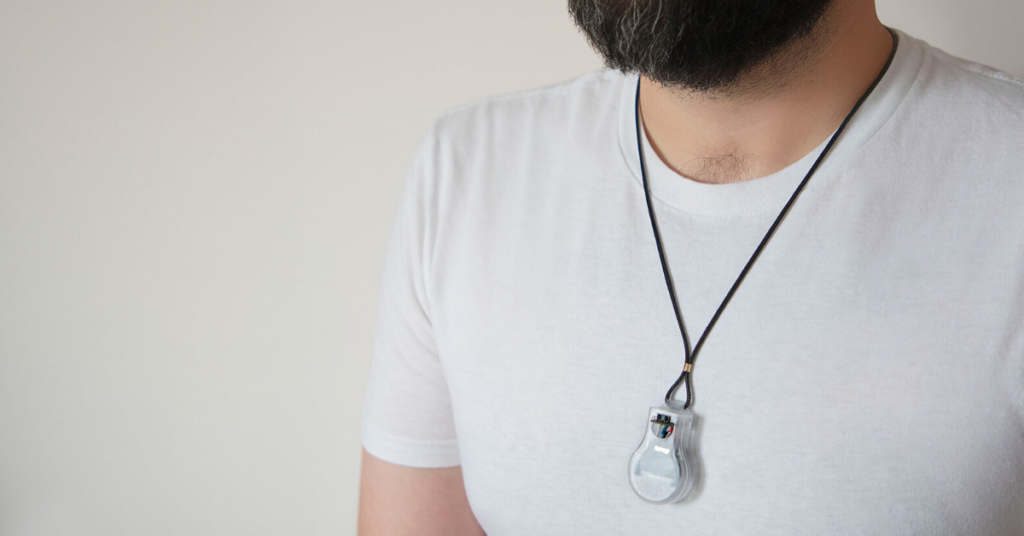If you’re having trouble resisting touching your face during the COVID-19 pandemic, NASA’s PULSE has your back. Well, technically your neck.
Health experts have long recommended that you should resist touching their faces in order to minimize the risk of getting COVID-19. We know now that it is mostly contracted via respiratory droplets, though it also could spread via contact with infected surfaces.
All it takes is a short touch to spread pathogens from your hands to your mouth or nostrils.
The way to minimize risk of getting the infection? Stop touching your face (side-by-side with washing your hands, wearing a mask, and practicing social distancing).
But this isn’t an easy ask. According to a study shared in the National Library of Medicine, we touch our faces an average of 23 times an hour. Mostly without even thinking about it.
It’s a difficult habit to break. So NASA set out to create a solution.
The result? PULSE: a vibrating necklace created to alert users when they’re about to touch their face.
The PULSE wearable device is worn around the user’s neck, and when they raise their hands toward their face it vibrates, reminding them to stop.
“The haptic feedback from a vibration motor simulates a nudge, reminding the wearer to avoid touching these entryways in order to reduce potential infection,” says NASA’s website.
NASA isn’t actually selling the PULSE device, but the agency’s Jet Propulsion Laboratory made building instructions available online, saying “we hope individuals or companies will replicate, refine or enhance PULSE and make it easily available for distribution.”
The design instructions to make the PULSE are free and available to anyone. Users need a 3D printer, a soldering tool, some wires, a motor, a coin battery, and other materials.
The space agency has also been busy developing other products, like a potentially lifesaving new ventilator.
“We specialize in spacecraft, not medical-device manufacturing,” NASA’s Jet Propulsion Laboratory Director Michael Watkins explained in a press release about the PULSE device. “But excellent engineering, rigorous testing and rapid prototyping are some of our specialties.”
Stick with us here at StarterNoise to keep up on news, wellness tips, and tech breakthroughs during this crazy time of COVID-19. And get the scoop on the big things, follow us on Twitter and Instagram.



